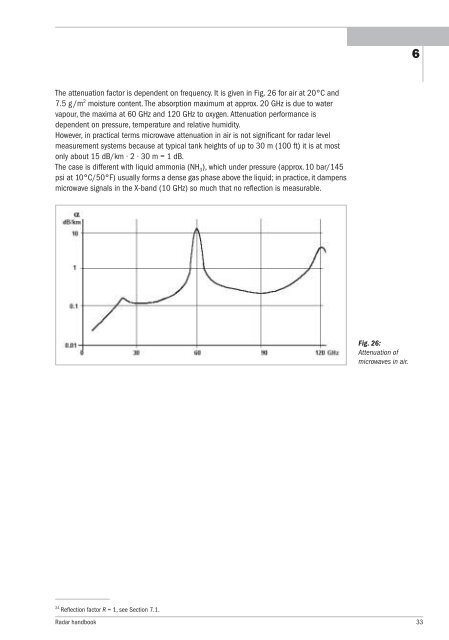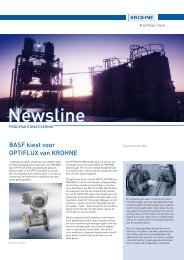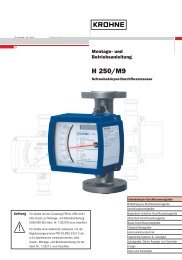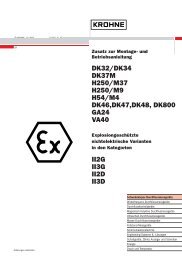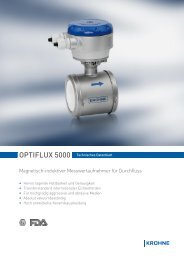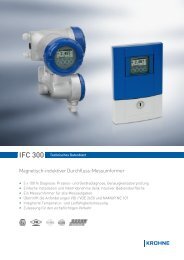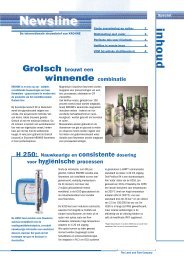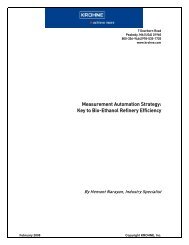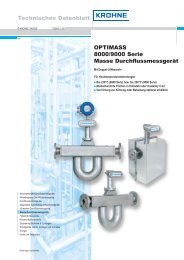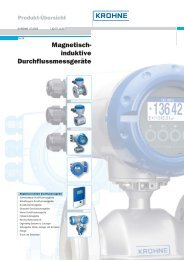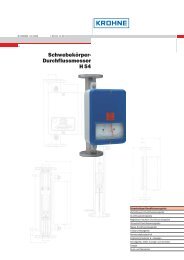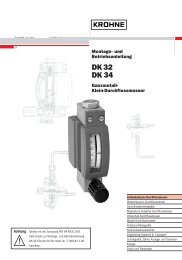Radar Technology for Level Gauging - Krohne
Radar Technology for Level Gauging - Krohne
Radar Technology for Level Gauging - Krohne
You also want an ePaper? Increase the reach of your titles
YUMPU automatically turns print PDFs into web optimized ePapers that Google loves.
The attenuation factor is dependent on frequency. It is given in Fig. 26 <strong>for</strong> air at 20°C and<br />
7.5 g /m 2 moisture content. The absorption maximum at approx. 20 GHz is due to water<br />
vapour, the maxima at 60 GHz and 120 GHz to oxygen. Attenuation per<strong>for</strong>mance is<br />
dependent on pressure, temperature and relative humidity.<br />
However, in practical terms microwave attenuation in air is not significant <strong>for</strong> radar level<br />
measurement systems because at typical tank heights of up to 30 m (100 ft) it is at most<br />
only about 15 dB/km · 2 · 30 m = 1 dB.<br />
The case is different with liquid ammonia (NH 3), which under pressure (approx.10 bar/145<br />
psi at 10°C/50°F) usually <strong>for</strong>ms a dense gas phase above the liquid; in practice, it dampens<br />
microwave signals in the X-band (10 GHz) so much that no reflection is measurable.<br />
6.5 Modified radar equation<br />
Based on the radar equation given in Section 3.7 the relations <strong>for</strong> antenna gain and propagation<br />
loss can now be included.<br />
According to Section 6.3 the power density of the waves be<strong>for</strong>e reaching the reflector at<br />
distance a is given by:<br />
The distinction now needs to be made between 2 cases, depending on the size of reflecting<br />
area A R:<br />
(a) The reflecting area is so large that it intersects the beam cross-section completely,<br />
so that in the ideal case 24 the transmission power is totally reflected. There<strong>for</strong>e, the total<br />
path a + a is travelled to the receiving antenna, and the power density is:<br />
24 Reflection factor R = 1, see Section 7.1.<br />
Fig. 26:<br />
Attenuation of<br />
microwaves in air.<br />
<strong>Radar</strong> handbook 33<br />
6


